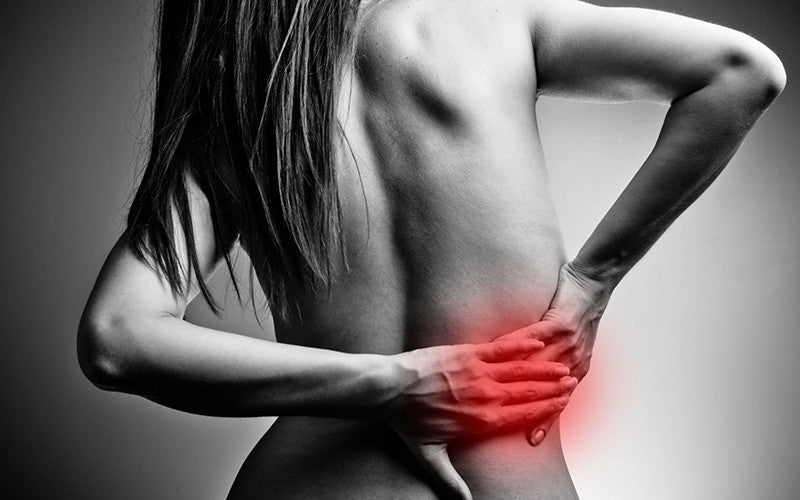2 Pain Problems, 1 Solution
As a nation, we’ve got a serious pain problem: According to the National Institutes of Health, one in four Americans—that’s more than 76 million people—deals with chronic pain, while millions of others suffer from acute symptoms. Pain affects more people than diabetes, cancer, and heart disease combined, and it’s the leading cause of disability. That’s extremely disheartening, especially because I believe there’s a simple solution.
A Yoga RX for Pain
Yoga is about much more than relaxation. It’s the ultimate body awareness education system: It teaches you about your body’s biomechanics, and with such intimate knowledge, you can then twist and contort into asanas. Once you’re connected with your muscles, ligaments, and connective tissues in this way, you hold yourself differently off the mat, too. Your musculoskeletal system works in harmony and alignment, not discord and inflammation. You carry yourself with lightness, relieving weight and pressure on bones and joints and easing pain and pressure.
Take, for example, the seemingly simple act of climbing stairs. When our bodies aren’t functioning properly, just climbing a stairway can be an arduous task. The body can be dead weight that must be painstakingly lifted and dragged up one step after another. But after practicing yoga, even for a short time, big things happen: We become lifted in our bodies, and it becomes easier and less painful to move during everyday challenges. This is why I want to spread the yoga gospel far and wide: The sooner everyone becomes a master of his or her body, the sooner we banish this pain problem to the past.
A Pain in the Grippy Mat
Of course, yoga does carry a risk of injury: Poses like Downward-Facing Dog, for example, are wrist and ankle intensive. Unfortunately, an addiction to grippy mats doesn’t help. In fact, I think it’s our society’s other pain problem.
As long-time yoga teacher Colin Hall noted in one of my favorite articles— “Yoga Mats: Are They Really Necessary?”—the grippy mat was originally designed by Angela Farmer to alleviate a medical condition that made it difficult for her to practice yoga; she didn’t sweat from her hands or feet. But sticky became the standard…and a big pain for yoga practitioners and instructors.
Taken out of its medical context, the grippy mat reinforces and emphasizes some of our worst tendencies during practice, namely wanting to “hang out” in poses and in joints. When we aren’t aware of our body, we sink into these delicate connections and cause wear and tear—in turn, causing pain. Grip impedes us from noticing such bad habits and helping the body function properly and pain-free. But when you practice on a mat without instant grip, you’re forced to think not sink, and to use your strength to keep from slipping.
If you’re new to yoga, starting your journey out of the grip of a grippy mat will help you begin with good habits, ease any existing pain, and minimize your risk of injury. If you’re a seasoned yogi, it’s never too late for a crash-course in the body. The results at every stage? A newfound power and painless practice, as well as life.
I encourage you to try a Plank mat side-by-side with a traditional mat, practicing the same pose first on the grippy mat then on your Plank. I’m confident that on your Plank you’ll feel your muscles engage more meaningfully and that you’ll notice your joints feel properly supported as you move into and hold your pose. You’ll feel a lightness and space around your wrists and ankles that means no pain possible.


0 comments